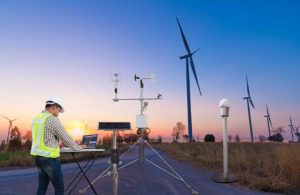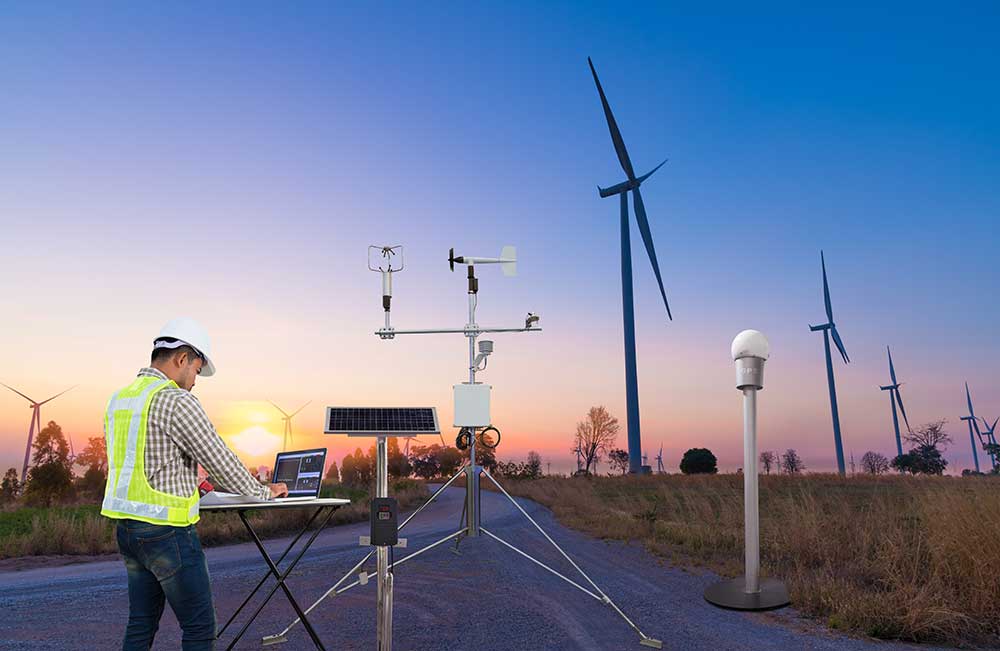Disclaimer: The information on our website is provided for general information purposes only. We make no representations or warranties of any kind, express or implied, about the completeness, accuracy, reliability, suitability or availability with respect to the website or the information contained on our website for any purpose. Any reliance on such information is therefore strictly at your own risk and we are not liable for any damages or losses arising out of or resulting from your reliance on any information contained on our website.
An atmospheric and space scientist analyses data from a variety of sources to make weather forecasts. They take their analysis and draft reports that advise others on the current weather and make weather predictions for the future. Those in this career may also be weather broadcasters and meteorologists.
Watch a video to learn what an atmospheric and space scientist does:
How to Become an Atmospheric and Space Scientist
To become an an atmospheric scientist, you’d gain a bachelor’s degree in a degree field such as meteorology or atmospheric science. In order to work as an atmospheric researcher, you would need at least a master’s degree with some employers requiring a Ph.D. If you already have a bachelor’s degree in mathematics, physics, or engineering, you can become an atmospheric scientist by earning a master’s degree in atmospheric science as well.
Job Description of a Atmospheric and Space Scientist

Atmospheric and space scientists analyze atmospheric conditions and prepare weather reports, often using computer graphics. They collect data from a variety of sources such as surface and upper air stations, satellites, and radars. They must be able to interpret data contained in maps, charts, and computer knowledge in order to make short and long-term weather predictions. These scientists may also theorize the cause of whether phenomena and even predict abnormalities in weather patterns that we may expect to see based on conditions on Earth.
These scientists take into consideration humidity, atmospheric pressure, temperature, dew point, and other data to make weather models. These models also help to identify extreme weather and environmental conditions an area may encounter such as excessive temperatures, drought, hurricanes, tornadoes, or flooding.
Free Teacher and Student Resources
Chalmers University of Technology offers a free Sensing Planet Earth – From Core to Outer Space course on EdX.org. Also, this course does include an option to pay a small fee to receive a certificate upon completion.
Atmospheric and Space Scientist Career Video Transcript
Even before breakfast, and certainly before leaving the house, most people consult the weather forecast. That essential item of news is provided by atmospheric and space scientists, who study the weather and climate, and examine how those conditions affect human activity and the earth. Atmospheric scientists collect data from the field using instruments such as weather balloons, radar systems, and satellite imagery. Many write their own computer programs to model or predict weather developments, and advise the public or their clients on risks caused by weather events and climate change.
There are many types of atmospheric scientists. For example, weather forecasters use computer models to forecast short- and long-term conditions for airports, farmers, utility companies, and others. Climate scientists model climate change to help plan building design and adapt agricultural production to changing conditions. Atmospheric scientists generally work full time and may be called upon to work at odd hours, or overtime—keeping the public informed during severe weather or monitoring conditions around the clock at a field station. They may work in government weather stations, laboratories and offices, or television and radio stations. Atmospheric scientists need a bachelor’s degree in meteorology or a related earth science field for most positions. To lead research or teach at the college level usually requires a Ph.D. or master’s degree in the field.
Article Citations
Bureau of Labor Statistics, U.S. Department of Labor, Occupational Outlook Handbook, Atmospheric Scientists, Including Meteorologists/a>.
National Center for O*NET Development. 19-2021.00. O*NET OnLine.
The career video is in the public domain from the U. S. Department of Labor, Employment and Training Administration.

